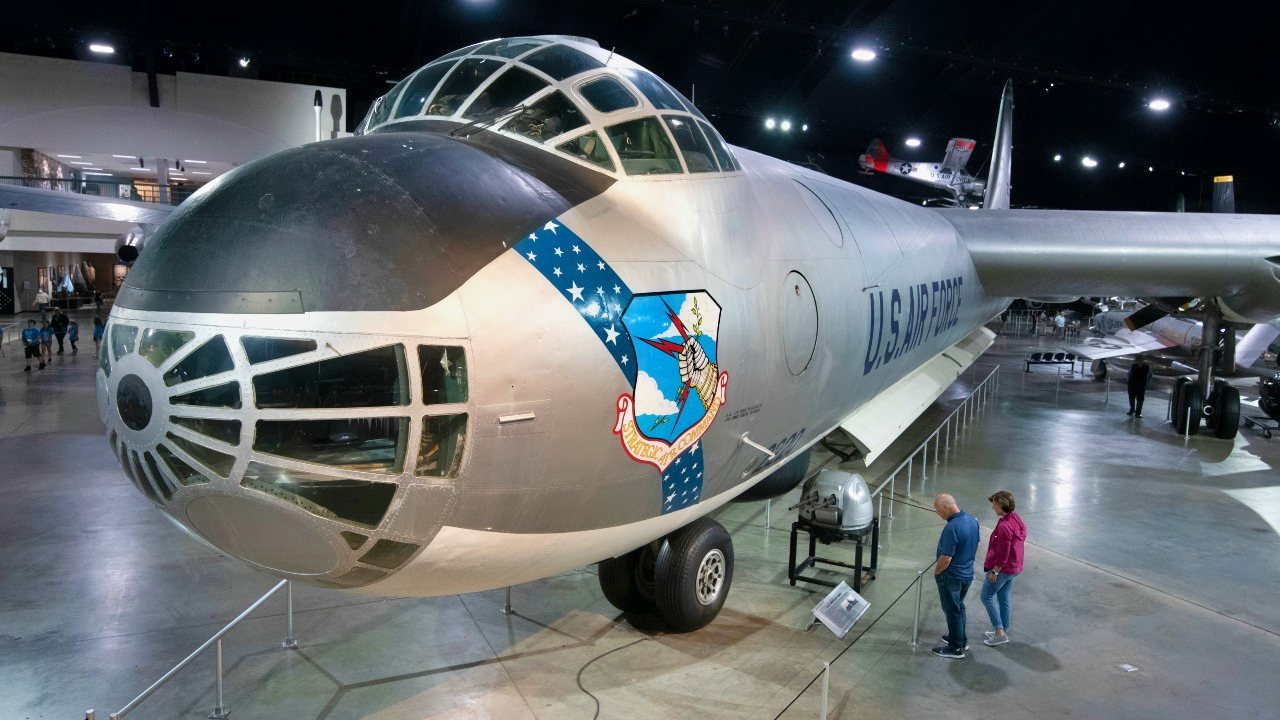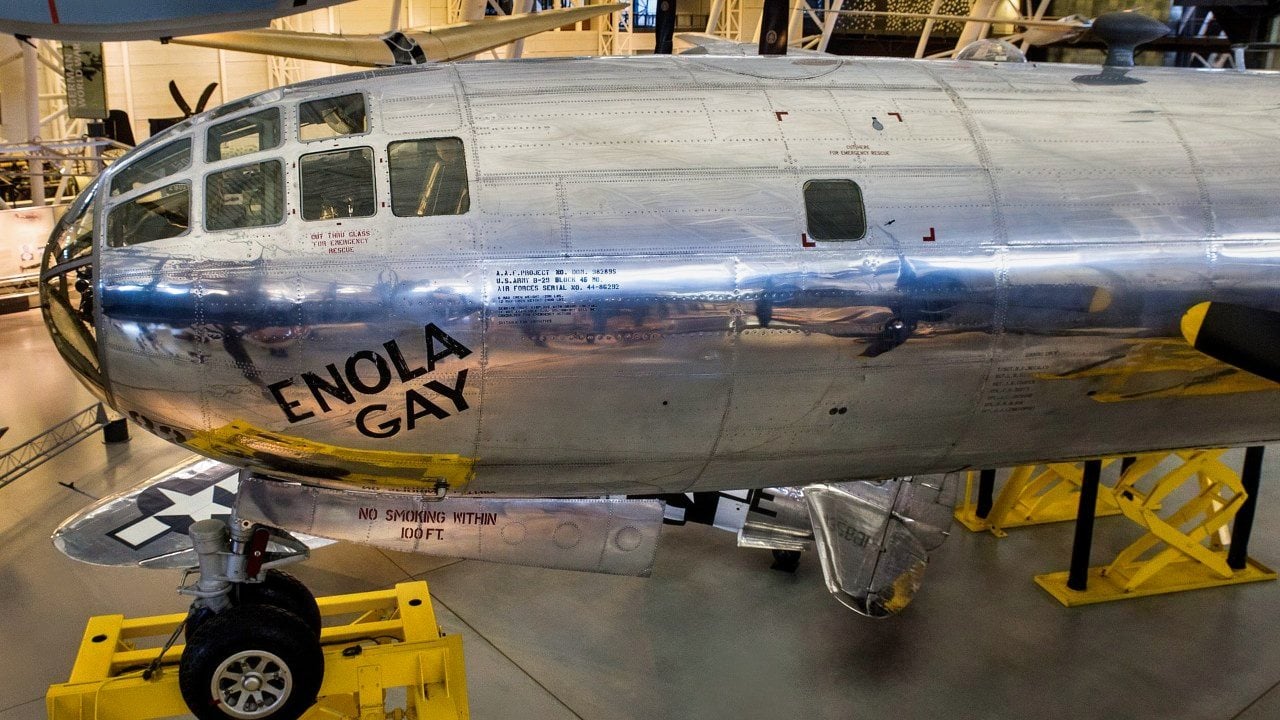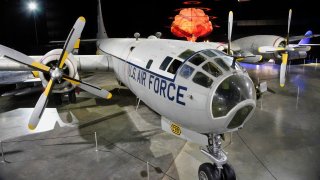B-50 Superfortress: The Air Force Bomber You Never Knew Existed
he Boeing B-50 Superfortress, an evolution of the WWII-era B-29, led the U.S. Strategic Air Command’s nuclear deterrence fleet in the late 1940s. Featuring a more powerful Pratt & Whitney R-4360 Wasp Major engine, the B-50 offered improved speed, range, and high-altitude performance.
3 Key Points: The Boeing B-50 Superfortress, an evolution of the WWII-era B-29, led the U.S. Strategic Air Command’s nuclear deterrence fleet in the late 1940s. Featuring a more powerful Pratt & Whitney R-4360 Wasp Major engine, the B-50 offered improved speed, range, and high-altitude performance.

-However, its service life was relatively brief, with successors like the B-36 Peacemaker and B-47 Stratojet soon replacing it.
-Notably, one B-50, the “Lucky Lady II,” was the first aircraft to complete a nonstop flight around the world. Although retired quickly, the B-50 laid crucial groundwork for modern strategic bombers.
B-50 Superfortress: The Strategic Bomber That Paved the Way for Nuclear Deterrence
As the U.S. Air Force’s next-generation B-21 stealth bomber program moves forward, a look at the service’s history of strategic bombers is warranted. The Boeing B-50 Superfortress is easy to overlook among them. While this post-World War II airframe spent less than two decades in the skies before being modified as a tanker, the bomber once led the newly formed Strategic Air Command’s nuclear deterrence fleet.
Strategic bombers remain the crux of the air portion of America’s nuclear triad, and the B-50 should be credited with spearheading this arrangement.
The Origins of the Superfortress:
Before the B-50, there was the B-29 Superfortress. Designed for high-altitude bombing, this propeller-driven heavy bomber participated mightily throughout the Second World War and the Korean War.
The first Superfortress carried a range of unprecedented features, including remotely controlled gun turrets, dual bomb bays, and pressurized crew areas. Perhaps most significant, B-29s were used to drop nuclear bombs on Hiroshima and Nagasaki, Japan in 1945 as part of the U.S. effort to end the war in the Pacific.
Toward the end of the war, U.S. officials sought a replacement for the Superfortress. While the B-29 was certainly the most capable bomber during the war, its engines were notoriously faulty. The Curtiss-Wright R-3350 Duplex Cyclone 18-cylinder engines equipped on the airframe suffered from chronic overheating issues. U.S. officials wanted the B-29’s replacement to run with the new Pratt & Whitney R-4360 Wasp Major radial engine. At the time, this was the largest-displacement aircraft piston engine to ever enter large-scale production.
As previously detailed by Sebastien Roblin, “These needs culminated in a new B-29D model with engine power cranked up nearly 60 percent using a 3,500 horsepower R-4360 Wasp Major engine and a skin made of stronger but lighter 75-S aluminum alloy. Together, this lowered the weight of the wings by 600 pounds and increased speed to nearly 400 miles per hour. Other trimmings included a taller tail fin, hydraulically assisted controls, and wing and window de-icing systems.”
Featuring this new engine, the Boeing B-50 Superfortress made its debut in 1947 and joined official operational service one year later. The B-29 remained in service during this period. While the two airframes shared the “Superfortress” designation and capabilities, the Army wanted to make the B-50 a completely new design to win additional funds for production.

The B-50 could lug a crew of 10 or 11 and had a wingspan of roughly 141 feet, with a maximum takeoff weight of 168,500 pounds. Equipped with its new advanced engine, the bomber could fly at a range of 4,650 nautical miles to a service ceiling of 37,000 feet.
From 1947 on, several new Superfortress variants were spun out. Few B-50As were produced, and these served as Washington’s air-based nuclear deterrent until the introduction of successors like the B-36 Peacemaker and B-47 Stratojet. In 1953, the Air Force introduced thirty-six B-50D variants specially equipped to carry out long-range weather reconnaissance missions. High-altitude atmospheric samplers, weather radar, Doppler radar, and a bomb-bay fuel tank were incorporated. Until these bombers were ultimately transferred to the Air Weather Service, they served special weather recon missions with SAC’s 97th Bomb Wing, according to the National Museum of the U.S. Air Force.
Operational History
During the Korean War, the B-50s deployed did not perform as well as expected against Soviet-made MiG-15 fighter jets. Previous Soviet fighters were incapable of intercepting these bombers at higher altitudes, but MiG-15s shot down several Stratofortresses, showing the platform as insufficient.
Although the B-50’s service history was shortlived, one B-50, the “Lucky Lady II,” was the first airframe to fly nonstop around the world. Today, the Lucky Lady II’s fuselage is stored at the Planes of Fame Museum in Chino, California. Other B-50 Superfortresses were scrapped or retired.
About the Author: Maya Carlin
Maya Carlin, National Security Writer with The National Interest, is an analyst with the Center for Security Policy and a former Anna Sobol Levy Fellow at IDC Herzliya in Israel. She has by-lines in many publications, including The National Interest, Jerusalem Post, and Times of Israel. You can follow her on Twitter: @MayaCarlin.
All images are Creative Commons and Shutterstock.


